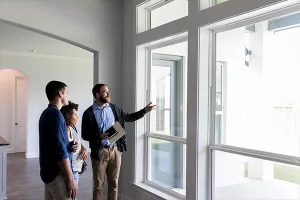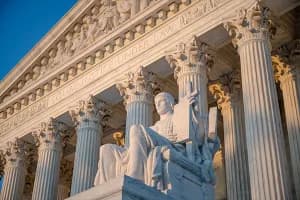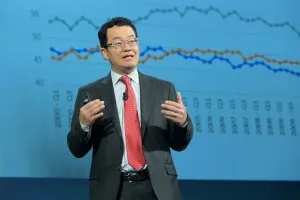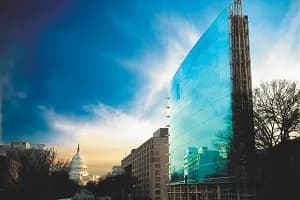Wouldn’t it be great to be able to walk to park in your neighborhood? Not only are parks great places to visit but surveys have shown that people desire them, as well as open spaces, and want them to be close to where they live. Other research shows that parks promote public health and help to revitalize local economies.

Jeremy Sharpe, vice president for community development for the Rancho Sahuarita master-planned community in Tucson, AZ, says “The closer residents can be to a park, the better. A safe well-maintained park is an amenity. We regularly survey our residents and parks and trails continue to be the main reason people live in our community.” Placemaking: The Value to Real Estate.

And, accordingly to Houselogic, a desirable public park or other recreational open space boosts the property value of nearby homes by 8%-20%. One study looked at 16,400 home sales within 1,500 feet of 193 public parks in Portland, Ore., and found these boosts to home values:
- Natural areas: $10,648
- Golf courses: $8,849
- Specialty parks: $5,657
- Urban parks: $1,214
And there is a health benefit too. Studies have shown that people who reside within half a mile of a park exercise five or more times a week than those who reside further away from parks. People who live close to green space have lower rates of depression, anxiety and poor physical health than do those who reside in more urban settings, according to a recent study in the Journal of Epidemiology and Community Health.

But, the Trust for Public Land (TPL) found that there are more than 100 million people living in our cities without close-to-home access to a park. As a result, they contend that “an entire generation is growing up disconnected from nature and the outdoors, missing out on the fun, fitness, and relaxation that parks provide.”

There are many reasons for the lack of parks and green spaces in our neighborhoods. The biggest challenges are usually funding and available space. But another reason is social inequity.
A National Recreation and Park Association (NRPA) Reportpdf shows that there is an unequal distribution of and access to green spaces, parks and recreation in many communities and that the disparities exist particularly in neighborhoods that largely consist of low income and racial/ethnic populations.
Children in these communities have to places to play except in streets, alleyways, or vacant lots instead of on green spaces or athletic fields.
Some communities may have parks but not many residents visit them. One reason is that parks are not built close to where people live. Other reasons include the availability, and variety, of park facilities and the conditions of the facilities. And, perceived and real personal safety is yet another factor that determines park use.
The NRPA report also states that park use is dependent on demographic, socioeconomic (SES) and regional characteristics. Other data shows that park users are more likely to visit a park that is easy to access, well maintained and safe.
But progress is being made. The Trust for Public Land is one organization that works with communities to ensure that everyone has a park, garden, or natural area within a 10-minute walk from home. And cities are beginning to follow their lead.
In “Which Comes First, the Park or the People?”, ULI finds that some cities, such as Boston, San Francisco, New York City and Washington, DC, are already on their way to meet a similar goal.

The Miami-Dade County Parks, Recreation and Open Spaces has established a goal within its Parks and Open Space System Master Plan that every resident should be able to walk to a park within 10 minutes of their home. The 10-minute walk translates to a ¼ to ½ mile walk. They want to create a more livable and sustainable Miami-Dade County with a focus on placemaking, conservation and health. The Department has assessed current park service and is actively working to fill in gaps by acquiring land to develop new parks and forming partnerships with other public agencies.
Louisville, KY is working to ensure that all residents can easily access parks and open space to engage in active lifestyles. The Louisville Loop, which is one project to meet this goal, is a 100-mile trail network that is expected to circle the city connecting neighborhoods to parks and recreation centers.
In St. Petersburg, FL, Mayor Rick Baker developed a policy called Play ‘n’ close to home to create a playground within a half mile of every child in the city. The Mayor then leveraged his political position to create the organizational authority, systems, and resources necessary to implement this policy. https://media.kaboom.org/docs/documents/pdf/playmatters/Play_Matters_St.Petersburg.pdfpdf
In Georgia, DeKalb County is on a mission to increase park use by providing residents with easy walking access to parks. DeKalb County officials purchased land and have constructed pedestrian access where it did not previously exist. In addition, officials recommended that a safe-routes-to-parks policy be developed to mirror ongoing efforts to create safe routes to schools.
And the Atlanta BeltLine is a sustainable redevelopment project that will provide a network of public parks, multi-use trails and transit along a historic 22-mile railroad corridor circling downtown and connecting many neighborhoods directly to each other.

Other cities are finding creative ways to develop green spaces in urban area such as building deck parks over highways; converting asphalt schoolyards into community parks; installing community gardens at abandoned properties and turning unused rail lines into linear parks. See: Transform an Unused Railroad Corridor into a Lively Trail and “El Spaces” into Public Spaces.
And new sustainable funding models are being proposed. Mahlon Apgar, CRE, a housing, infrastructure, and real estate consultant, suggests value-based local tax benefit for merchants who contribute in-kind support to the park; a market-based pricing for revenue-generating activities in the park; and a services-based assessment to pay for maintenance.

So, if your neighborhood does not have a nearby park or open space, you may want to get involved in a project to change that. Several Realtor® Associations have used NAR’s Placemaking Micro-grant to do just that.









